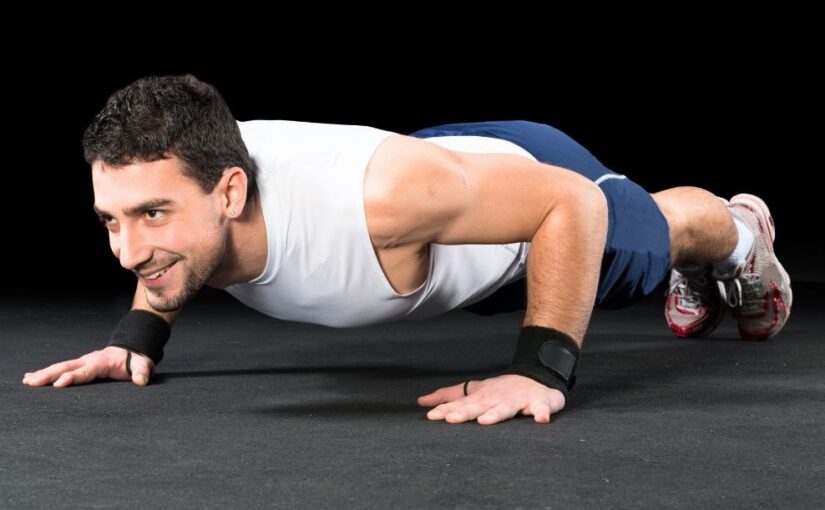Building strength at home without any equipment is entirely feasible and can be an effective way to enhance your fitness. Bodyweight exercises, combined with proper nutrition—including the option of protein supplements—can help you achieve your goals. Whether you’re a beginner or looking to maintain progress outside the gym, developing strength at home starts with the right approach. Here’s a comprehensive guide to get you started.
1. Understand Bodyweight Exercises
Bodyweight exercises use your own weight as resistance, allowing you to develop strength, flexibility, and endurance. They can be modified to suit all fitness levels and are ideal for home workouts.
2. Create a Balanced Routine
To increase strength, it’s essential to target all major muscle groups. A balanced routine includes:
- Upper Body: Push-ups, tricep dips, and planks
- Core: Planks, mountain climbers, and leg raises
- Lower Body: Squats, lunges, and glute bridges
Sample Routine:
- Warm-up: 5 to 10 minutes of dynamic stretching (arm circles, leg swings)
- Circuit: Perform each exercise for 30-60 seconds with 15-30 seconds of rest in between. Repeat the circuit 2-4 times.
- Push-ups
- Squats
- Planks
- Lunges
- Glute bridges
Training Frequency: Aim to perform this routine 3-4 times per week for optimal strength gains. Have at least one rest day in between sessions to allow your muscles to recover.
3. Focus on Form
Proper form is crucial to prevent injuries and maximize effectiveness. Pay attention to the following:
- Push-ups: Keep your body aligned in a straight line from your head to your heels. Bring yourself down until your chest is almost touching the ground.
- Squats: Keep your feet shoulder-width apart, chest up, and knees over your toes as you lower down.
- Planks: Maintain a straight line from head to heels, engaging your core throughout.
4. Progressive Overload
To build strength, you need to challenge your muscles gradually. This can be done by:
- Increasing Repetitions: Aim to add more reps as you get stronger.
- Changing Variations: Introduce advanced variations (e.g., decline push-ups, pistol squats) as you progress.
- Shortening Rest Periods: Shorten the rest time between sets to increase intensity.
5. Incorporate Isometric Exercises
Isometric exercises involve holding a position for a certain duration, helping to build endurance and strength. Some effective isometric exercises include:
- Wall Sit: Lean against a wall and slide down until your thighs are parallel to the floor. Hold for 30-60 seconds. Perform 2-4 sets.
- Plank: Maintain a plank position, engaging your core and glutes. Hold for 30-60 seconds. Perform 2-4 sets.
- Glute Bridge Hold: Lift your hips off the ground and hold for a set time. Hold for 30-60 seconds. Perform 2-4 sets.
6. Utilize Your Environment
You don’t need fancy equipment; everyday items can serve as tools for resistance:
- Stairs: Use them for step-ups and incline push-ups.
- Chairs: Perform tricep dips or incline push-ups.
- Towels: Use them for resistance in rows (pulling against the towel).
7. Focus on Core Strength
A strong core supports overall strength and stability. Include core-specific exercises in your routine, such as:
- Russian Twists: Sit on the ground, lean back slightly, and twist your torso side to side.
- Bicycle Crunches: Lie on your back and bring opposite elbow to knee in a cycling motion.
8. Prioritize Proper Nutrition
Nutrition plays a vital role in building strength and recovery. To support your workouts:
- Protein: Incorporate lean protein sources (chicken, fish, legumes, tofu) to aid muscle repair and growth. If you struggle to meet your protein requirments through food alone, consider protein supplements like whey or plant-based protein powders.
- Carbohydrates: Include whole grains, fruits, and vegetables to provide energy for your workouts. Complex carbs help replenish glycogen stores, which are essential for performance.
- Healthy Fats: Avocados, nuts, and olive oil can support hormone production and overall health. Include them in moderation.
- Hydration: Drink plenty of water throughout the day and especially before, during, and after workouts to stay hydrated.
9. Stay Consistent
Consistency is key to any fitness program. Strive for 3-4 sessions per week, incorporating your strength routine and allowing for adequate recovery. Stay motivated by tracking your progress, establishing goals and achieving them.
10. Prioritize Recovery
Strength training creates tiny tears in your muscles, and recovery is vital for growth. Ensure you:
- Get Enough Sleep: Aim for 7-9 hours of quality sleep per night to facilitate recovery.
- Rest Days: Allow muscles to recover by incorporating rest days or lighter activity days.
- Listen to Your Body: If you feel overly fatigued or sore, take an extra rest day or opt for a lighter workout.
TL;DR: You can effectively build strength at home without any equipment by focusing on bodyweight exercises like push-ups, squats, and planks. Follow a balanced routine targeting all major muscle groups, use progressive overload techniques, and incorporate isometric holds to boost endurance. Support your training with proper nutrition—including adequate protein—and stay consistent with 3–4 sessions per week. Focus on recovery and pay attention to your body’s signals to prevent injuries and support lasting progress.
Conclusion
Increasing strength at home without equipment is both practical and achievable. By focusing on bodyweight exercises, maintaining proper form, staying consistent, and supporting your progress with good nutrition (including protein supplements if needed), you can build a solid foundation of strength. Most importantly, listen to your body, adjust as necessary, and enjoy the journey of gaining strength at home.
Frequently Asked Questions (FAQ)
Yes! Bodyweight exercises like push-ups, squats, and planks are highly effective for building strength, especially when performed consistently with proper form and progression.
Aim for 3–4 sessions per week, allowing at least one rest day between workouts to support muscle recovery and growth.
Use progressive overload by increasing reps, shortening rest times, or trying harder variations (e.g., decline push-ups or single-leg squats).
You don’t need a special diet, but prioritizing protein, complex carbs, and healthy fats—and staying hydrated—will help support strength gains and recovery.
Mild soreness is normal, but if you’re experiencing sharp pain or excessive fatigue, it’s best to rest or opt for a lighter workout to avoid injury.
Helpful Gear to Level Up Your Strength at Home
If you’d like to elevate your bodyweight workouts and boost your results, then these accessories can add resistance, improve comfort, and help you train more effectively:
Weighted Vests
Add resistance to standard movements like push-ups, squats, and lunges to increase intensity and accelerate strength gains.
Ankle Weights
Great for lower-body exercises and core workouts, ankle weights provide extra challenge during movements like leg lifts and glute bridges.
Exercise Mats
A supportive, non-slip mat makes floor exercises safer and more comfortable—especially during planks, sit-ups, and stretching.
Workout Gloves
Improve grip and protect your hands during exercises like push-ups, dips, or when using household items as resistance tools.
Affiliate Disclaimer:
The above links contain affiliate links. If you click and purchase through these links, we may earn a small commission at no additional cost to you.

